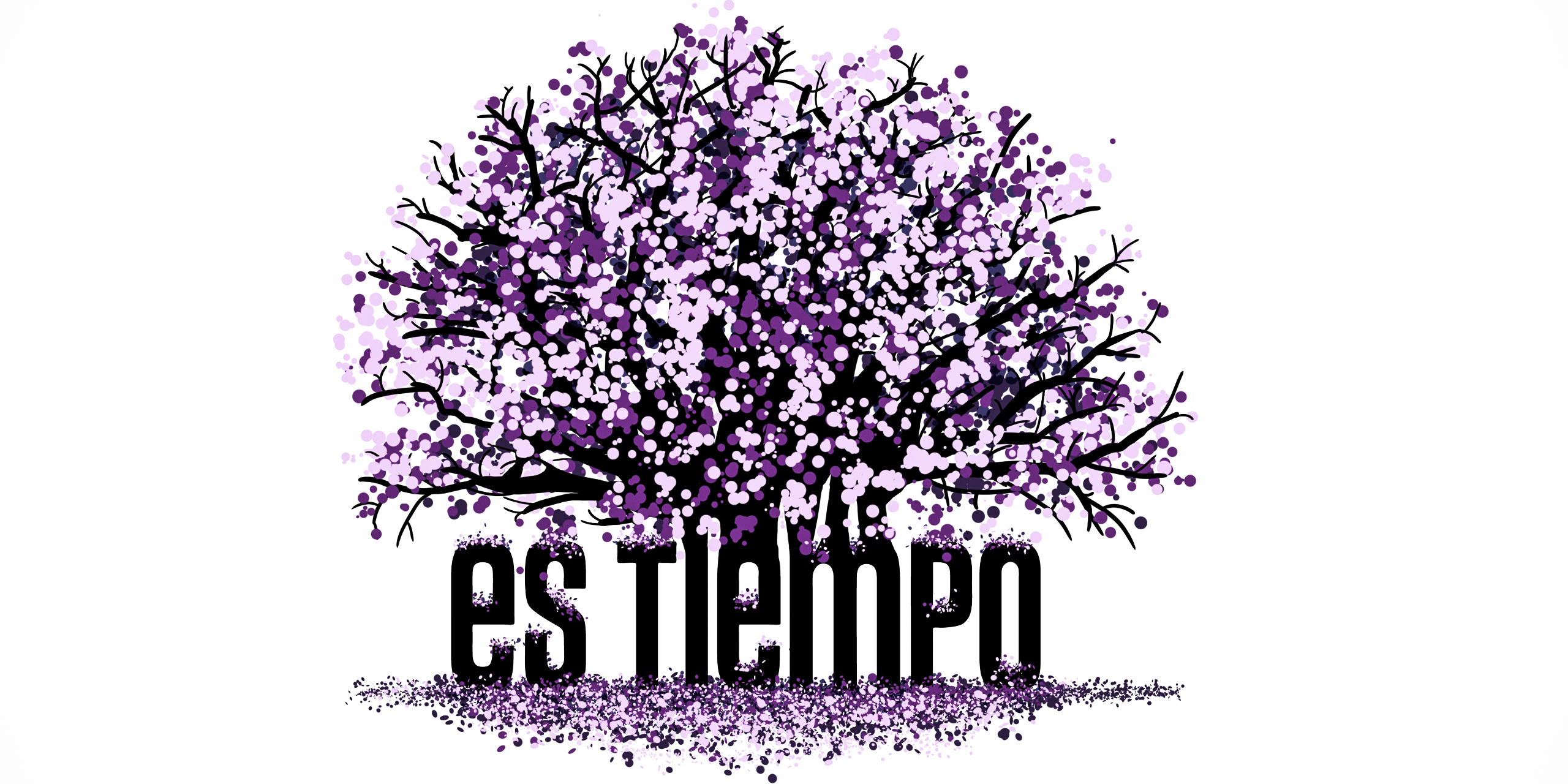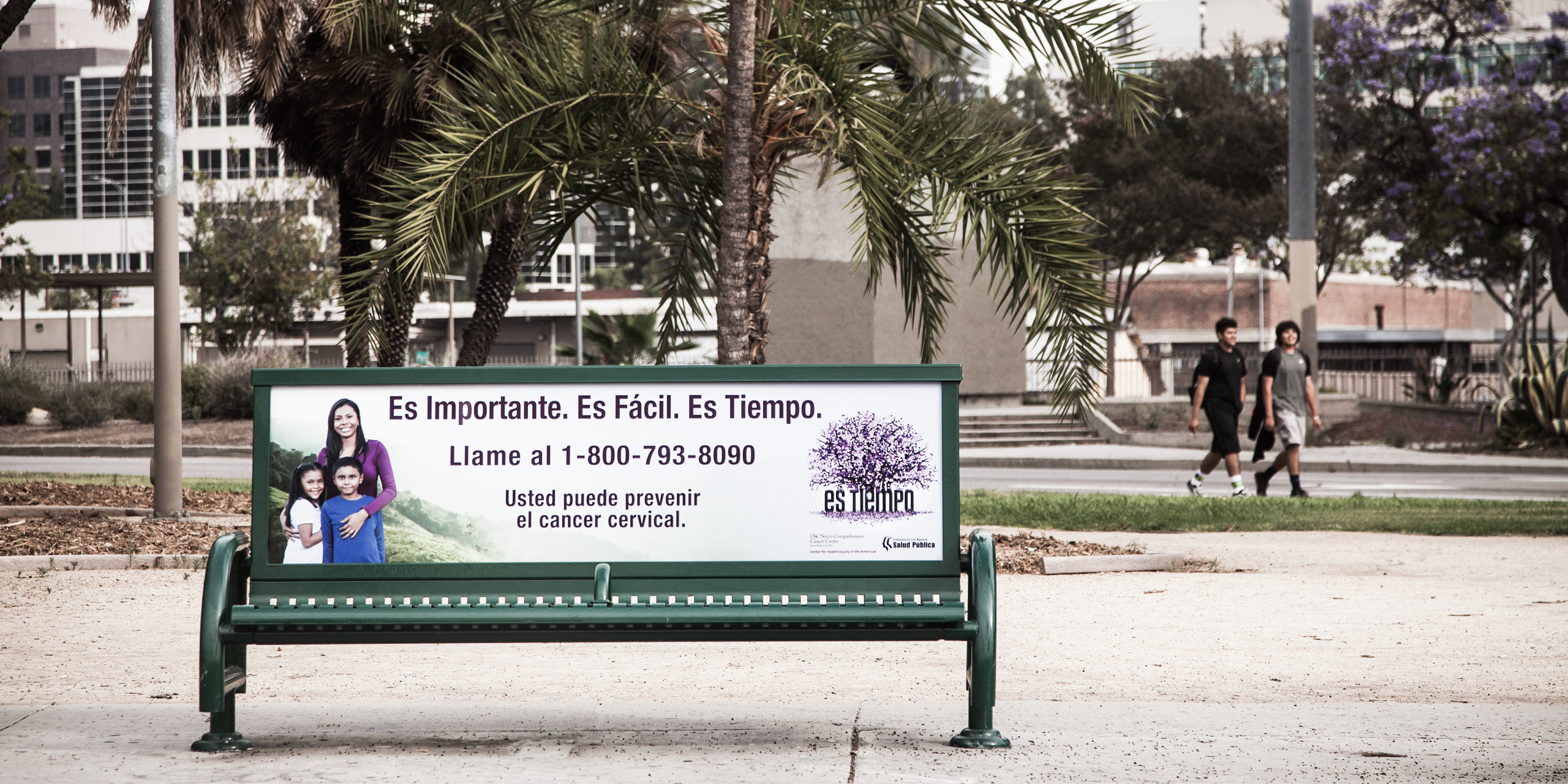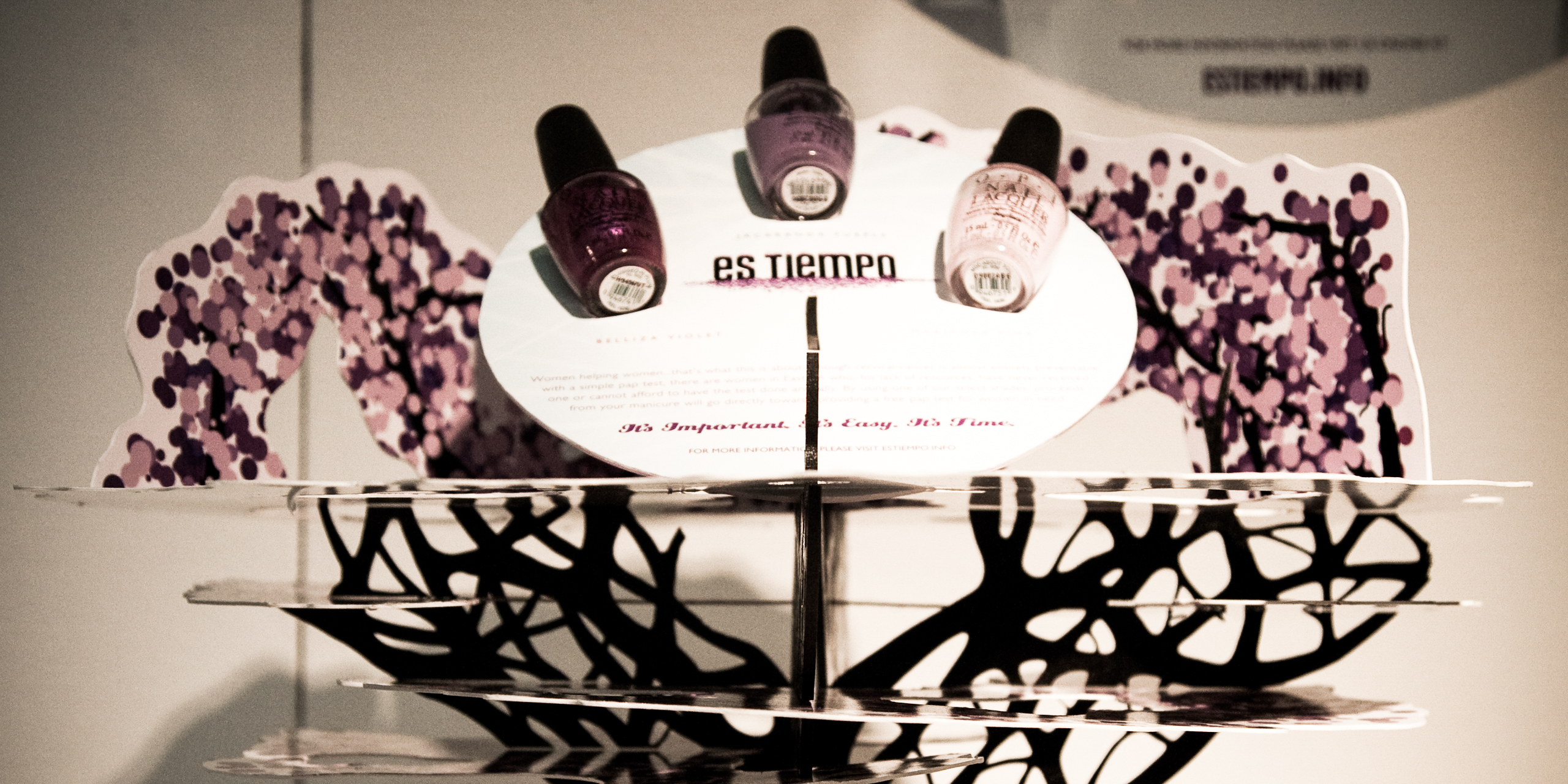Es Tiempo Campaign Motion Piece
Animation by Murphy Armitage

A multi-faceted campaign raising awareness and support for prevention and treatment of cervical cancer, the Es Tiempo campaign was produced in partnership with theUniversity of Southern California Norris Comprehensive Cancer Center, Keck School of Medicine and the Annenberg School for Communication and Journalism.
RECENT PROJECT DEVELOPMENTS:

Students were challenged to create communications to persuade Latinas in Los Angeles’ underserved communities to comply with clinical guidelines for cervical-cancer screening.
Latinas in North, Central, and South America are disproportionately vulnerable to cervical cancer. Cervical cancer can almost always be cured, if detected and treated early. In the underserved neighborhoods of east LA, incidence of early-detection screening—the routine pap test—is dramatically lower than elsewhere. Given current population trends, the incidence of cervical cancer will double or triple in the coming decades in Los Angeles unless effective interventions are instituted immediately. In collaboration with LAC + USC Medical Center, Designmatters created a trans-disciplinary studio to explore effective strategies for intervention in the East LA community.
The students began their research broadly: by visiting the USC/Norris Cancer Center , by visiting local clinics, by studying the visual and material culture of East LA. On the basis of this early research, the students created ‘rapid prototypes’ of their preliminary ideas for the project.
Most importantly, however, researchers at USC Annenberg School of Communicationsconducted focus groups with at-risk Latinas, and their findings brought the challenge into focus. Contrary to the class’ expectations, awareness of the pap test and its importance was not the fundamental problem: virtually all the women knew what a pap test was, and that they should be screened regularly. However, the barriers—cultural, institutional, and practical—were many and varied:
Given the number and complexity of the obstacles, a simple advertising campaign wouldn’t be enough: a more elaborate integrated communications program, knocking down as many barriers as possible, was required. The students settled on a three-part program.

For this, the students appropriated the jacaranda tree—the beautiful, beloved, purple-flowered tree that blooms in southern California, and in Central and South America, each spring. The first part of the campaign links the jacaranda tree to screening: posters, video, and radio advertising remind women that “when the jacaranda tree blooms, it’s time to schedule your pap test.” Maps and environmental graphics—again, featuring the jacaranda tree logo—direct women to local clinics where they can obtain low- and no-cost pap tests. All are signed with the tag line “Es Importante, Es Facil, Es Tiempo”: “It’s Important, It’s Easy, It’s Time.”
To ease the financial burden of missing work during screening, students devised the Es Tiempo VISA Gift Card: when a woman gets her pap test, her card is credited with $20; when she calls back to obtain her test results, her card is credited with another $10; if she persuades a friend to get a pap test, her card is credited with another $5. The balance can be spent anywhere VISA is accepted. In addition, an easy-to-use website allows the woman to check her test results and card balance online, and offers videos of a friendly young woman explaining what pap results mean, and encouraging the viewer to follow up. In all aspects, the campaign is light, friendly, and approachable: there’s no fear-mongering, no hectoring, no doctors present at all—just a social network of friends helping and encouraging each other.

To subsidize the effort, the students proposed a themed fund-raising campaign. In it, corporations committed to women’s health and well-being—OPI, Avon, others—would offer Es Tiempo jacaranda-themed products (nail polish, perfume, room fragrance) to their customers; profits from sales would support the incentive program. By engaging the women everywhere, the fundraising effort continues and expands the central motive of the Es Tiempo campaign: women helping other women.
Finally, a series of ancillary products and services—t-shirts, tote bags, even warm socks for the exam room—perpetuate and amplify the campaign’s theme.
Students created an exhibition of the Es Tiempo campaign, displaying how all facets of the campaign worked together–from the moment a woman first encountered the campaign poster in her local library, her experience at the clinic, to when she received her results. The exhibition is planned to be displayed at LAC + USC Medical Center for prospective donors and partners to the campaign. It will also be used as a research tool with future focus groups at USC Medical Center.
In 2010, the Es Tiempo project was featured at the I.D. Annual Design Review Exhibition in New York City, and in 2011 was also featured at HOW Design Conferencein Chicago.